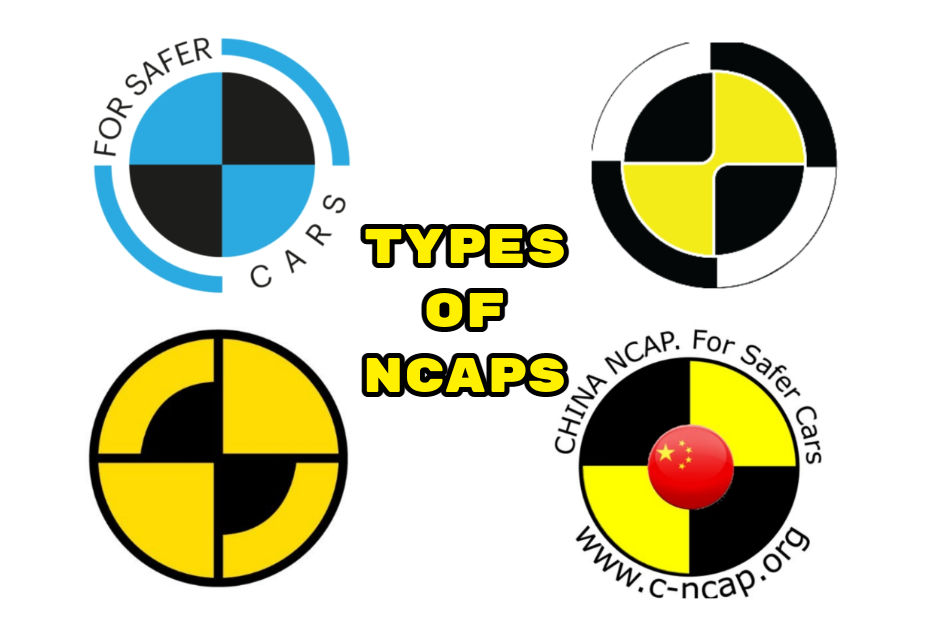Different Types of NCAPs Explored: Testing Automotive Safety Around The World
Modified On Aug 27, 2023 03:58 PM By Shreyash
- Write a comment
There are a total of 10 NCAPs that test car safety around the world, including the latest one in India

The New Car Assessment Program (NCAP) serves as a platform that analyzes automotive safety in various countries with crash tests and scores. The safety standards are established and tested on different parameters by each NCAP, and they are divided into categories such as adult occupant safety, child safety, pedestrian safety, and more. A star rating out of five and scores are assigned after analyzing the safety of a specific car, based on the predetermined parameters.
These safety parameters vary from country to country and depend on the type of NCAP. Since the parameters vary, the safety standards and star ratings also vary accordingly even for the same vehicle being sold in multiple countries. In this article, we cover various NCAPs that exist around the world for the assessment of automotive safety.
Australian NCAP (ANCAP)

The Australian NCAP began in 1992, and since then, it has tested thousands of models from various brands that are sold in Australia and New Zealand. ANCAP works closely with 21 organizations, including government agencies in both Australia and New Zealand.
While the overall requirements for achieving a favorable safety rating from ANCAP are quite similar to those of Global NCAP, ANCAP distinguishes itself by placing greater emphasis on active safety features, including advanced driver assistance systems. Notably, these specific tests are not obligatory under the Global NCAP protocols.
ASEAN NCAP

Safety for the vehicles sold in Southeast Asian countries such as Singapore, Thailand, Indonesia, etc., is tested and scored by the ASEAN NCAP, which was established in December 2011. The ASEAN NCAP is headquartered in Malaysia and was jointly established by the Malaysian Institute of Road Safety Research (MIROS) and Global NCAP.
When it comes to safety protocols, vehicles tested by ASEAN NCAP need to score up to 70 percent in safety assist technologies to be able to achieve full 5-star safety ratings. Whereas, with the Global NCAP’s current protocols, vehicles even without safety assistance systems can achieve full 5-star safety ratings.
China NCAP (CNCAP)

The China NCAP was reportedly established in 2006 to assess the automobile safety of cars sold in China. The C-NCAP is managed by the China Automotive Technology and Research Center (CATARC).
Euro NCAP

The Euro NCAP, also considered to be one of the toughest NCAPs worldwide, was established in 1997. It tests car safety for European countries like Germany, Austria, Belgium, and France. The European automotive safety testing agency works in partnership with seven European governments, including consumer organizations in all European countries.
The Euro NCAP has not only mandated the safety assist features for a good safety rating, but also performs “Front Mobile Progressive Barrier” and “Front Full Width Rigid Barrier” tests, which are not done by Global NCAP.
Global NCAP

The Global NCAP, which began operations in 2011, is known for testing safety standards of various cars worldwide. In 2014, it launched a campaign called #SaferCarsForIndia, under which it tested many cars made in India from brands like Tata, Mahindra, Maruti Suzuki, Hyundai, Kia, and Renault.
The Global NCAP has updated its protocols, and according to these a vehicle must also have features like electronic stability program (ESP) and seatbelt reminder to qualify for full 5-star safety ratings. Additionally, Global NCAP also does side pole impact and pedestrian safety tests to award safety points to the vehicles.
From now on, the international organization will not test India-specific cars as the Bharat NCAP will soon be in action, but it will continue to provide technical support to the Bharat NCAP. For more information, you can visit the provided link.
Japan NCAP

To assess the safety of cars specific to Japan, the Ministry of Land, Infrastructure, Transport and Tourism (MLIT) and the National Agency for Automotive Safety & Victims’ Aid (NASVA) started the Japan NCAP in 1995.
The Japan NCAP rates the vehicle depending upon three categories: Vehicle safety performance, collision safety performance and preventive safety performance. According to JNCAP’s protocol, vehicles must also be equipped with an Automatic accident emergency call system.
Korean NCAP

The safety of vehicles sold in South Korea is assessed by Korean NCAP, which was founded in 1999.
Latin NCAP

The Latin NCAP is an automotive safety testing agency for vehicles that are sold in Latin America and the Caribbean region. This covers countries like Brazil, Mexico, Argentina, Colombia, Jamaica and more. It was founded in 2010 as a joint venture, with Global NCAP also being one of the investors in this testing agency.
Though Latin NCAP’s safety assessment is also based on adult, child and pedestrian protection, along with safety assist features also affecting the safety rating of a vehicle, it is still not as stringent as the Euro NCAP’s norms.
US NCAP

The US NCAP is the oldest car safety assessment program here, which started crash testing vehicles in the United States in 1978. The US NCAP was established by the National Highway Traffic Safety Administration (NHTSA), an agency of the U.S. federal government that is part of the Department of Transportation.
The US NCAPs rates the safety of the vehicle based on frontal, side crash tests along the fitment of crash avoidance safety features. It also evaluates the vehicles for rollover, which is not done by any other NCAP.
Bharat NCAP

Recently, the Indian government introduced its own version of the NCAP, called Bharat NCAP, to assess the safety of cars sold in India. The project was inaugurated by Nitin Gadkari, the Union Minister of Road Transport and Highways (MoRTH) in India, and it will be in action from October 2023. More details on the Bharat NCAP may be found here.
There are a total of 10 new car assessment programs running all over the world. These programs not only inform us about a car's safety, build, and strength but also raise awareness among consumers about how safety should be of utmost priority when buying a vehicle.
4 out of 4 found this helpful














